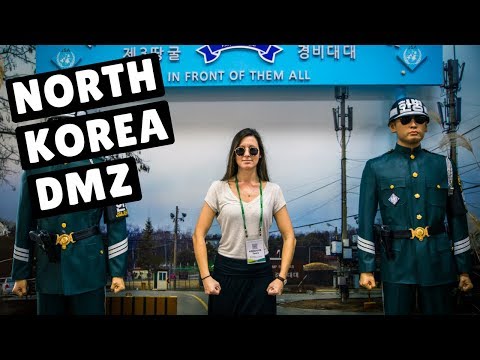
Visiting the Korean Demilitarized Zone (DMZ) is a journey steeped in history and tension. It’s a strip of land running across the Korean Peninsula, serving as a buffer zone between North and South Korea, established by the provisions of the Korean Armistice Agreement to end active fighting in 1953. The DMZ is not just a border; it is a palpable reminder of the conflicts and hopes of a peninsula divided in two. Among its guarded paths, one unique experience stands out starkly: spending four minutes in North Korea. This short time can be an intense exposure to the complexity and chilling ambiance of one of the most isolated countries in the world.
### The Setting: Panmunjom and the Joint Security Area (JSA)
The journey begins at Panmunjom, located within the JSA, where both South and North Korean forces stand face-to-face under an often uneasy ceasefire. This site hosts several blue buildings straddling the Military Demarcation Line (MDL)—the actual border between North and South Korea. It’s here that tourists get to technically step foot into North Korean territory.
### The Experience: Stepping Across The Line
Upon entering one of these blue conference rooms facilitated by United Nations Command, visitors are suddenly half-in South Korea and half-in North Korea—literally walking across into a territory shrouded with mystery and intrigue. Under strict supervision and for no more than four minutes, visitors can walk around this small room which has hosted numerous diplomatic meetings since it was established.
The atmosphere inside is eerily quiet; conversations are subdued as if every spoken word could tip an invisible balance. Tourists often comment on feeling an intense weight of history pressing down upon them—the gravity of standing on soil ruled by one of world’s most secretive regimes.
### Observations from Inside
Looking out through windows on either side presents contrasting views—lush landscapes versus stark militaristic outlines. The contrast between the visibly tense armed soldiers outside and neutral calmness inside adds to an overwhelming cognitive dissonance. As visitors absorb their surroundings under time pressure, there’s barely enough seconds to contemplate over decades-long political conflicts that have torn families apart and shaped geopolitical alliances globally.
### Safety Protocols
Safety is paramount in such sensitive international grounds. All tours are tightly controlled with visitors receiving thorough briefings about what they should not do during those critical minutes spent across the border—like making sudden movements or pointing cameras directly at North Korean soldiers.
### Reflections on Leaving
As swiftly as they entered, visitors are ushered back to South Korean territory, carrying with them not just photos or souvenirs but profound reflections. Those fleeting moments spent in a notoriously inaccessible nation evoke thoughts about freedom, peace, conflict resolution, human rights issues that continue beyond these borders.
### Conclusion
Spending four minutes in North Korea via DMZ isn’t merely about geographical transgression—it’s about experiencing firsthand a slice of global history that continues to influence international relations today. For many travelers who undertake this journey at Panmunjom’s iconic blue buildings within the Joint Security Area, it represents much more than crossing a line on a map; it symbolizes hope for reconciliation amid enduring separation.
